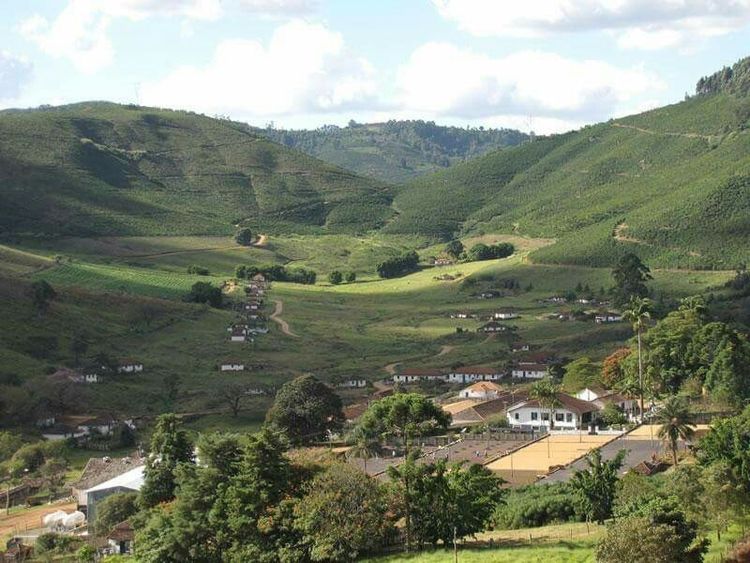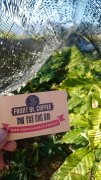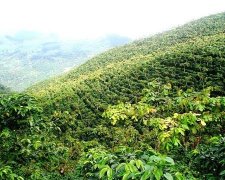How to grow Coffee quality will be better Coffee planting Micro-environment introduction
How to grow Coffee quality will be better Coffee planting Micro-environment introduction

The origin of the coffee tree is Ethiopia in Africa. In botany, coffee trees belong to the evergreen trees of the subgenus Rubiaceae, and coffee beans, commonly known as coffee beans, are the seeds of the fruit of coffee trees, just because they are shaped like beans, so they are called coffee beans.
Climate is the decisive factor for coffee cultivation. Coffee trees are only suitable for growing in the tropics or subtropics, so the zone between latitude 25 degrees south and north is the most suitable for growing coffee. This coffee production zone is generally referred to as "coffee belt" or "coffee area".
However, not all the land located in this area can cultivate good coffee trees. The ideal planting conditions for coffee trees are: a warm climate with a temperature of 15-25 ℃, and a rainfall of 1500-2000 mm throughout the year, and the rainfall time should be consistent with the flowering cycle of the coffee tree. Of course, in addition to the coordination of seasons and rainfall, there should be fertile soil. The most suitable soil for growing coffee is a well-drained, fertile soil containing volcanic ash.
Coffee belt: coffee can not be grown in any environment, because it is originally a plant growing in a tropical rain forest, and in phylogeny, it forms the habit of requiring calm wind, cool, shaded or semi-shaded and humid environment.
Temperature: the temperature requirements vary with the cultivated species, small seed species are more cold-resistant, like warm and cool climate, the average annual temperature is 19-21 degrees.
Rainfall: annual rainfall of more than 1250 mm, uniform distribution, especially in the flowering and small fruit development period, there is a certain amount of rainfall is most suitable for the growth and development of coffee.
Light: coffee trees are not resistant to strong light and need proper shade. The light is too strong and their growth is inhibited. If you add in the lack of water and fertilizer, there will be premature senility and even death. The shade is excessive, the branches and leaves are too long, the flowers and fruits are scarce and the yield is very low.
Wind: coffee likes a quiet breeze.
Soil: coffee tree has well-developed roots, shallow distribution of absorbing roots, and requires loose, fertile and well-drained loam.
Most of the coffee harvesting in the world is selected by hand, so it is a labor-intensive and seasonally intensive process. Since there are both flowers and fruits on the same branch, the index finger and thumb of the collector are the best tools for collecting ripe berries. Scraping the fruit off a whole branch by hand or using an automated harvester can't tell ripe berries from green berries.
Coffee farmers who produce low-grade coffee beans like to use labor-saving methods to harvest beans, but in this way, because the quality is not pure, it impairs the flavor of coffee and lowers the grade of coffee. The way to pick coffee beans in some parts of Africa is to shake coffee trees, shake the fruit off the ground, and pick it up from the ground before the fruit is injured and rotten. Secondary coffee is produced in most parts of Brazil, where coffee is picked by plucking all the leaves, flowers, overheated and green fruits from the branches at a time, and it takes two years for such damaged coffee trees to return to normal.
Important Notice :
前街咖啡 FrontStreet Coffee has moved to new addredd:
FrontStreet Coffee Address: 315,Donghua East Road,GuangZhou
Tel:020 38364473
- Prev

The difference between coffee planting and orchard planting introduces how to manage the coffee plantation
The difference between coffee planting and orchard planting introduces how to manage the young seedling stage of the coffee farm: the seedling stage is the period from the germination of seeds (or cuttings, grafting) to the emergence of seedlings (nursery stage), about 0.5-1.5 years. After the coffee seeds were sown, the cotyledons began to be unearthed after a period of germination, which took about 30-100 days.
- Next

China's most suitable microclimate for coffee cultivation Introduction to coffee cultivation on the environmental needs
China's most suitable microclimate for growing coffee Introduction to the environmental needs of coffee cultivation The origin of coffee trees is Ethiopia in Africa. Coffee tree in botany, belongs to the Rubiaceae coffee subgenus evergreen tree, and generally known as coffee beans, survey is the coffee tree fruit seeds, only because the shape like beans, so called coffee beans. Climate is coffee growing
Related
- Beginners will see the "Coffee pull flower" guide!
- What is the difference between ice blog purified milk and ordinary milk coffee?
- Why is the Philippines the largest producer of crops in Liberia?
- For coffee extraction, should the fine powder be retained?
- How does extracted espresso fill pressed powder? How much strength does it take to press the powder?
- How to make jasmine cold extract coffee? Is the jasmine + latte good?
- Will this little toy really make the coffee taste better? How does Lily Drip affect coffee extraction?
- Will the action of slapping the filter cup also affect coffee extraction?
- What's the difference between powder-to-water ratio and powder-to-liquid ratio?
- What is the Ethiopian local species? What does it have to do with Heirloom native species?

